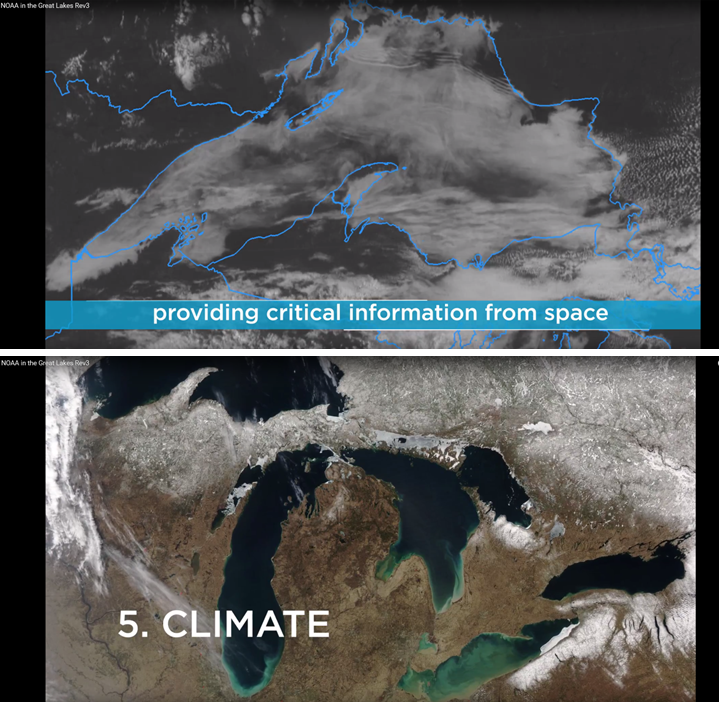
[ Archive ]

 |
CIMSS-NOAA Weekly Report [ Archive ] |
 |
ASPB AND CIMSS WEEKLY HIGHLIGHTS FOR THE WEEK ENDING SEPTEMBER 29, 2017
IN THE PRESS:
NOAA, SSEC, and CIMSS Scientists In the News: Scientists based at the University of Wisconsin-Madison Space Science and Engineering Center (SSEC) and the Cooperative Institute for Meteorological Satellite Studies (CIMSS) provided expert commentary, interviews, and imagery to the media on topics ranging from atmospheric ozone, hurricane forecasting, and imagery related to Hurricane Maria. In addition to the stories highlighted below, see SSEC In the News for more media mentions (http://go.wisc.edu/56jzc3). NOAA physical scientist Brad Pierce was a guest on Wisconsin Public Radio’s Larry Meiller Show, discussing the 2017 Lake Michigan Ozone Study and the higher than normal ozone levels that have been recorded over Sheboygan, WI: http://go.wisc.edu/2td107. CIMSS scientist Derrick Herndon was interviewed on Wisconsin Public Television’s Here and Now program providing a closer look at how the Tropical Cyclones Group at the UW-Madison tracks hurricanes and provides support to the National Hurricane Center: http://go.wisc.edu/usq5i3. VIIRS Day/Night band images processed by CIMSS researcher William Straka III, showing power outages in Puerto Rico after Hurricane Maria, were picked up by the PBS News Hour, CNN, Mashable, as well as ABC, CBS, NBC, among others: http://go.wisc.edu/z02any, http://go.wisc.edu/nxnj7a, http://go.wisc.edu/x7091j. (J. Phillips, SSEC, 608-262-8164; R.B. Pierce, E/RA2, 608-890-1892, brad.pierce@ssec.wisc.edu; D. Herndon, CIMSS, 608-262-6741; W. Straka III, CIMSS, 608-262-5128)
(Click image to enlarge)
Figure caption: VIIRS images showing power outages over Puerto Rico after Hurricane Maria. Credit: NOAA, CIMSS, Willima Straka III.
ITEMS FOR THE ADMINISTRATOR:
ITEMS FOR THE ASSISTANT ADMINISTRATOR:
ITEMS FOR THE OFFICE DIRECTOR, STAR:
NOAA in the Great Lakes Video: As part of the NOAA Great Lakes Regional Collaboration Team, members of the Advanced Satellite Products Branch (ASPB) provided GOES-16 and Moderate Resolution Imaging Spectrometer (MODIS) satellite imagery for the NOAA in the Great Lakes Video (https://www.youtube.com/embed/jgIdnwJHXMU?rel=0). These satellite images highlight the work that NESDIS does in support of weather and climate in the Great Lakes Region. (R.B. Pierce, E/RA2, 608-890-1892, brad.pierce@noaa.gov, T. Schmit, E/RA2, 608-263-0291, tim.j.schmit@noaa.gov, J. Key, E/RA2, 608-263-2605 jeff.key@noaa.gov)
 (Click image to enlarge)
(Click image to enlarge)
Figure caption: Still images from the NOAA in the Great Lakes Video include GOES-16 visible loop showing Lake Superior Fog on July 10, 2017 (upper panel) and MODIS lake ice imagery over the Great Lakes (lower panel)
ITEMS FOR THE DIVISION CHIEF, CoRP:
Manuscript on channel selection published: A manuscript entitled "A step forward toward effectively using hyperspectral IR sounding information in NWP" has been published in Advances in Atmospheric Sciences. Coauthors are Jun Li (CIMSS/UW-Madison) and Wei Han (Numerical Weather Prediction Center, CMA). (Jun Li, CIMSS, 608-262-3755, Jun.Li@ssec.wisc.edu)
VISITORS:
NEXT WEEK:
LOOKING AHEAD:
| Archived Weeklies Page | Submit a report item |